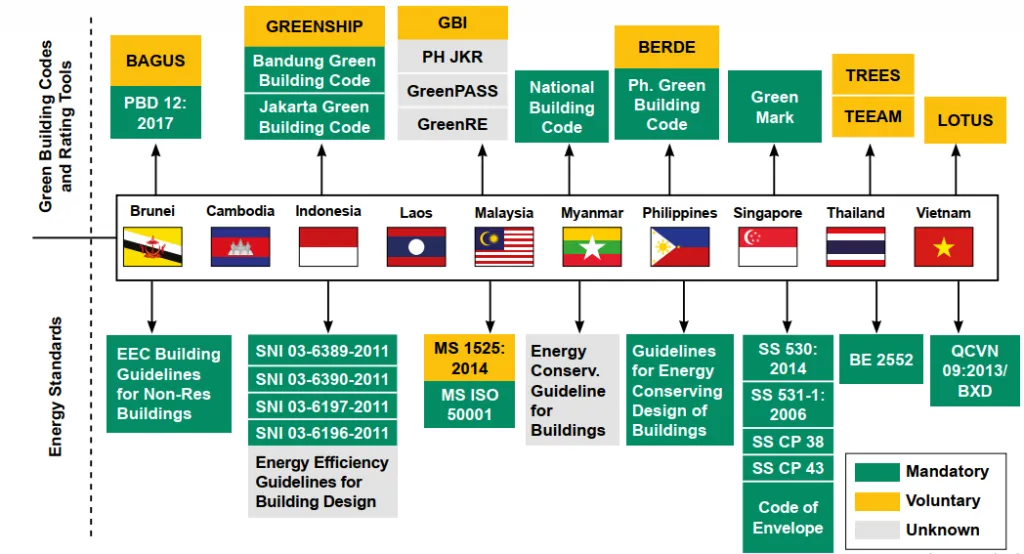Green Building Certifications in Southeast Asia are reshaping the construction industry in the region. They promote sustainability, reduce energy consumption, and offer significant benefits for developers and investors. With growing awareness and robust government initiatives, these certifications are becoming a cornerstone of sustainable construction in the region.
Why Green Building Certifications in Southeast Asia Matter
Buildings contribute about 20% of global energy consumption. This makes the construction industry a critical area for reducing emissions. Green certifications address this by encouraging energy-efficient designs and sustainable materials. As a result, these buildings use less energy, emit fewer greenhouse gases, and provide healthier environments for occupants.
The global green building sector is expanding rapidly, doubling every three years. Southeast Asia is a key part of this trend. Certifications like Singapore’s Green Mark, which has certified over 1,500 buildings since 2005, show how structured programs can drive change. Other countries in the region are now adopting similar models to reduce energy use and support sustainable urban development.
Benefits for Developers and Investors

Green buildings offer clear advantages for developers and investors. Certified properties often achieve higher rental rates and occupancy levels compared to conventional buildings. This is particularly important as more consumers prioritize energy-efficient homes.
In Singapore, the government supports sustainable construction through financial incentives tied to its Green Mark certification. These measures reduce upfront costs for developers while ensuring long-term savings on energy and maintenance. For investors, green buildings represent a lower-risk asset. They are more resilient to climate-related impacts and regulatory changes, making them an attractive option in a competitive market.
Green Building Certifications in Southeast Asia Drive Market Demand
Consumer demand for sustainability is growing. Surveys reveal that homebuyers increasingly value energy-efficient features in properties. This trend is influencing developers to adopt green certifications, which signal a commitment to environmental responsibility. By meeting these expectations, developers can attract a broader audience and enhance their market competitiveness.
Not only that, but Green Building Certifications in Southeast Asia also contribute to a circular economy by promoting the use of recycled and sustainable materials. This not only minimizes waste but also supports cost-efficient construction practices. The economic impact is significant. Research indicates that sustainable construction could generate long-term benefits, contributing substantially to the region’s GDP.
The Role of Government and Regulations
Southeast Asian governments are playing a vital role in encouraging sustainable construction. Regulatory frameworks, such as mandatory energy performance standards, ensure that developers prioritize sustainability. In addition, voluntary rating systems provide a pathway for developers to achieve recognition for their green initiatives.
Singapore’s leadership in this area is a model for the region. The government’s target of reducing energy intensity by 35% by 2030 reflects a strong commitment to sustainability. Incentive programs tied to certifications ensure that developers see both environmental and economic benefits from their efforts.
Green Building Certifications in Southeast Asia: A Win-Win for All
Green building certifications are more than a trend—they are a necessity in today’s world. For developers, they provide a pathway to cost savings and increased property value. For investors, they offer a way to support sustainability while securing high returns. For communities, they mean healthier living environments and reduced energy consumption.
As the region continues to grow, the adoption of Green Building Certifications in Southeast Asia will play a vital role in ensuring that development is sustainable, resilient, and beneficial for all. By aligning government initiatives, market demands, and investor interests, Southeast Asia is paving the way for a greener future.






